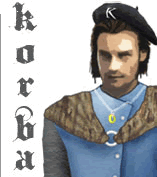
Monday, 09 May 2016
Mapping Notes
There are three vital elements to mapping, without all the elements the whole process breaks down. They are first, direction. Secondly distance, and thirdly accurately recording that information. It's often the final part that causes the most problems. Notes made in the field can often become a complicated tangle of lines and notes when you get back to civilization.
Direction is perhaps the easiest, compasses make recording north, south east and west simple, and then we have up and down. Again all very intuitive. Distance is much more tricky. It can be very hard to tell how far you have traveled. I find the easiest method is to count my strides and then compare it to something similar, for example here in this rooms it's quite easy to count how many strides it takes to cross the room, and we have an idea how large the area is before we leave.
If at all possible you should travel in a straight line for the entire length, or width of an area. I would also suggest you start from a corner or edge. This way you can map the boundaries of the area and fill in the details later. If you can take strides the same length time and again, then you have an accurate, ish, way of recording distance. This combined with direction gives you the start of a map.
As I said near the beginning, its the final stage, the recording that's often the biggest challenge. However there a few techniques that help. I will try and explain with some examples. The first is start at a known point, ideally with an obvious feature like a life monument, that way you always have a point of reference you can work back to. That way even if you are forced to take a winding path you can always retrace your steps and have useful information. For example...
If you started from the Milltown life monument, headed into the desert in a random pattern but kept an accurate track of your distance and direction. When you eventually reached another landmark, such as the anthill. You wouldn't have a map but you would have a path mapped that anyone else could follow.
A better technique would be to start at the life monument and head east until you reach the wall, head north and then back west until you reach the mountains having crossed the anthill. That way you would have Milltown, the wall, the mountains and the anthill all mapped in relation to each other. And much more quickly.
The next technique is to stay on the same level for as long as possible. If you try and complicate your mapping by going up and down it can become virtually impossible to keep track of your path. I'm sure everyone here has been to the dark forest, once you get the hang of it it's easy enough to navigate. Now imagine going through the forest, climbing into the canopy, back down again and then up again. I know that would confuse me. It's much easier to map your limits on one level before moving up or down and repeating.
That's a simple example, the desert tombs in N'rolav, or worse yet the anthill this is essential.
Korba posted @ 05:02 -
Link -
comments 043283 visitors


 Monday, 09 May 2016
Monday, 09 May 2016